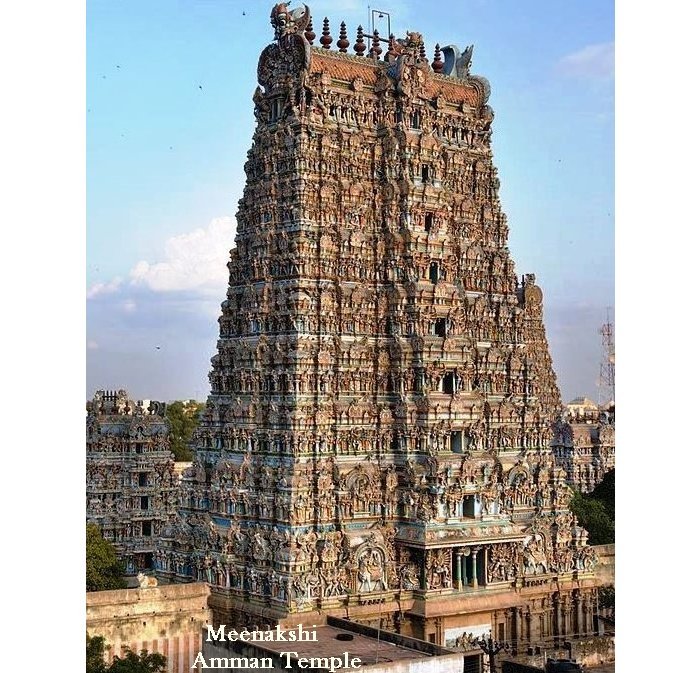Meenakshi Temple Of Madurai Is Among Most Powerful Sacred Sites For Hindu People
A. Sutherland - AncientPages.com - The Dravidian (or Southern-style) is the earlier of the two main styles in the evolution of sacred Hindu architecture.
It is characterized by several architectural masterworks left in the legacy of many ruling dynasties of South India. Their building activities date back from the 7th century onwards. It is worth mentioning that each dynasty developed a distinctive style that survived in extraordinary building designs.
This temple is dedicated to the goddess Meenakshi who is the incarnation of the Hindu goddess Parvati.
In Madurai, one of South India's great temple towns, the Meenakshi Temple is one of the largest and most powerful sacred sites for Hindu people. The temple is dedicated to Meenakshi (an avatar of the Hindu goddess, Parvati) that symbolizes love and fertility.
Legend Of Meenakshi
It is said that Meenakshi emerged out of a 'Yajna' (an avatar of the Hindu god Vishnu in the Bhagavata Purana) as a three-year-old girl. According to a legend found in the Tamil texts, a king named Malayadwaja Pandya, along with his wife Kanchanamali, was unable to conceive a child and thus offered prayers to
Lord Shiva to request him for a son. Instead, a daughter was born out of the fire. She was already three years old and had three breasts. Shiva intervened by saying that the parents should treat her like a son, and when she meets her husband one day, she will lose the third breast, and so it happened later.
The royal pair followed Shiva's advice. The girl grew up, the king crowned her as the successor, and when she met Shiva, his words came true, and she took her true form of Meenakshi. The marriage of Meenakshi and Shiva was a great event, in which participated all the gods, goddesses, and living beings. Vishnu is believed to be the brother of Meenakshi, who – according to Hindu tradition - gives her away to Shiva at the wedding.
Towering Gopurams And Thousands Of Painted Stone Statues
Carved in the Dravidian style of architecture, this ancient Madurai landmark dates back to more than 2500 years and is the oldest in the city. It was built by the Pandyan king, Kulashekarar, in the 6th century B.C. But during the reign of the Madurai Nayak dynasty, the town flourished along with architecture, art, and learning.
Meenakshi Temple (or Meenakshi Amman Temple) has 14 towering gopurams, ranging from 45m to 50m in height, and enclosed by richly carved pillars. The temple has some ancient sections, but the most significant part dates back to the 17th century. The stricture's four gopurams are decorated with a great variety of mythological figures from the Hindu pantheon and can be seen from great distances.
The Meenakshi Temple complex is renowned as one of the temples with doors in each of the four directions for the worshippers to enter. It is also one of the few architectural and, at the same time, religious objects dedicated to a female deity. The ancient Indian builders created thousands of richly painted stone statues displaying the Hindu gods, goddesses, demons, and animals, forming the walls of the Meenakshi Temple's fourteen towers. The towers are not of the same height, but the tallest measures 170 ft (almost 52 m).
A closer look at the carvings at the Meenakshi Temple. Credit: Accesscrawl - CC BY-SA 4.0
Ancient texts say that Tamil Nadu Hindus first built the temple in 600 C.E. before Muslim conquerors destroyed it in the 1300s. Still, after more than two centuries, the sacred site of Madurai was rebuilt during the 16th century.
According to ancient Tamil literature, it was initially built by survivors of the lost continent of Kumari Kandam, a mythical landmass that extended across the Indian Ocean. This mysterious 'land along the mount Meru (Panmalaiyadukkam) submerged during the destruction of Kumari Kandam. It was a vast land stretching from the Himalayas to South Kumari Kandam and the South Pole. Kumari Kandam represents a legendary sunken continent, described in Tamil literature.
Before submerging, Kumari Kandam lay to the south of India, approximately south of present-day town Kanniyakumari, in Tamil Nadu.
Pandiyan Kings of an ancient Tamil dynasty ruled it for 10,000 years and divided into 49 territories. 'Silappadhikaram,' one of the Five Great Epics of Tamil Literature written in 2nd century C.E., confirms this catastrophic event, and another ancient Tamil source gives the list of Pandiyan Kings who ruled the Kumari Kandam.
Written by – A. Sutherland - AncientPages.com Senior Staff Writer
Copyright © AncientPages.com All rights reserved. This material may not be published, broadcast, rewritten or redistributed in whole or part without the express written permission of AncientPages.com
More From Ancient Pages
-
 The Invisible Plant Technology Of The Prehistoric Philippines
Archaeology | Jul 1, 2023
The Invisible Plant Technology Of The Prehistoric Philippines
Archaeology | Jul 1, 2023 -
 Fenja And Menja: Two Giant Sisters, Magical Grotte Mill And Why The Sea Is Salt
Featured Stories | Feb 15, 2020
Fenja And Menja: Two Giant Sisters, Magical Grotte Mill And Why The Sea Is Salt
Featured Stories | Feb 15, 2020 -
 Climate Change Likely Drove Early Human Species To Extinction – Scientists Say
Archaeology | Jul 31, 2023
Climate Change Likely Drove Early Human Species To Extinction – Scientists Say
Archaeology | Jul 31, 2023 -
 Legend Of Kitezh – Ancient Underwater City And Its Doomsday Prophecy
Featured Stories | Mar 14, 2017
Legend Of Kitezh – Ancient Underwater City And Its Doomsday Prophecy
Featured Stories | Mar 14, 2017 -
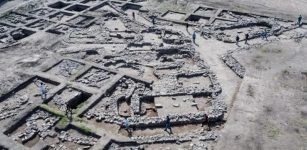 Incredible 5,000-Year-Old New-York-Like Metropolis Discovered In Israel
Archaeology | Oct 9, 2019
Incredible 5,000-Year-Old New-York-Like Metropolis Discovered In Israel
Archaeology | Oct 9, 2019 -
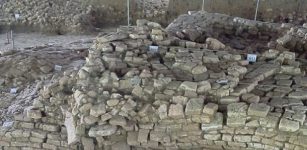 Wrecks of ancient ships found in Malaysia’s Sungai Batu ancient site
News | Sep 4, 2015
Wrecks of ancient ships found in Malaysia’s Sungai Batu ancient site
News | Sep 4, 2015 -
 Peculiar Bronze Mace Head Left By Unknown Ancient Culture Discovered In Poland
Archaeology | Jul 1, 2019
Peculiar Bronze Mace Head Left By Unknown Ancient Culture Discovered In Poland
Archaeology | Jul 1, 2019 -
 3D Scans Reveal Secrets Of Rare Ancient Canoe From Lake Mendota In Wisconsin
Archaeology | Jun 3, 2022
3D Scans Reveal Secrets Of Rare Ancient Canoe From Lake Mendota In Wisconsin
Archaeology | Jun 3, 2022 -
 Mystery Of Arthur’s Stone In UK – Solved?
Archaeology | Aug 11, 2021
Mystery Of Arthur’s Stone In UK – Solved?
Archaeology | Aug 11, 2021 -
 Fatocuriosos.club Guilty Of Hundreds Of Copyright Violations Is Stealing Content Daily From AncientPages.com
News | Sep 22, 2022
Fatocuriosos.club Guilty Of Hundreds Of Copyright Violations Is Stealing Content Daily From AncientPages.com
News | Sep 22, 2022 -
 Unique Study Of Skeletal Remains Reveals Grave Health Of Australian Pioneer Settlers
Archaeology | Apr 7, 2022
Unique Study Of Skeletal Remains Reveals Grave Health Of Australian Pioneer Settlers
Archaeology | Apr 7, 2022 -
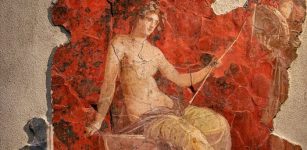 Never-Before-Seen Frescoes From Hadrian’s Time Unveiled At Ancient Roman Baths
Archaeology | Jun 27, 2022
Never-Before-Seen Frescoes From Hadrian’s Time Unveiled At Ancient Roman Baths
Archaeology | Jun 27, 2022 -
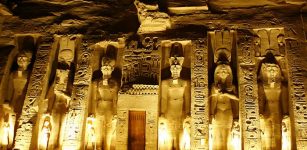 Abu Simbel – Spectacular Ancient Egyptian Temples Unique In Design And Size
Featured Stories | Jun 12, 2021
Abu Simbel – Spectacular Ancient Egyptian Temples Unique In Design And Size
Featured Stories | Jun 12, 2021 -
 Roman Tombs Unearthed In Egypt’s Dakhla Oasis
Archaeology | Jan 28, 2019
Roman Tombs Unearthed In Egypt’s Dakhla Oasis
Archaeology | Jan 28, 2019 -
 Indigenous Communities Used The Caribbean Sea As An Aquatic Highway
Archaeology | Jun 23, 2022
Indigenous Communities Used The Caribbean Sea As An Aquatic Highway
Archaeology | Jun 23, 2022 -
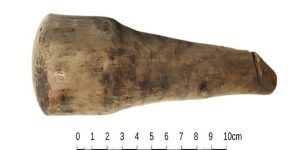 Unique Roman Artifact Discovered At Vindolanda Was More Than A Good Luck Charm
Archaeology | Feb 20, 2023
Unique Roman Artifact Discovered At Vindolanda Was More Than A Good Luck Charm
Archaeology | Feb 20, 2023 -
 Crosby-Schøyen Codex: Ancient Coptic Manuscript Reveals Sermon That Spurred Violence Against Jews
Featured Stories | Jun 5, 2024
Crosby-Schøyen Codex: Ancient Coptic Manuscript Reveals Sermon That Spurred Violence Against Jews
Featured Stories | Jun 5, 2024 -
 Resourceful Neanderthals Could Dive 13ft If Necessary To Collect Shells
Archaeology | Jan 16, 2020
Resourceful Neanderthals Could Dive 13ft If Necessary To Collect Shells
Archaeology | Jan 16, 2020 -
 On This Day In History: Treaty Of Worms Signed Between Great Britain, Austria And The Kingdom Of Sardinia – On Sep 13, 1743
News | Sep 13, 2016
On This Day In History: Treaty Of Worms Signed Between Great Britain, Austria And The Kingdom Of Sardinia – On Sep 13, 1743
News | Sep 13, 2016 -
 Oldest Human Remains From Puerto Rico Reveal A Complex Cultural Landscape Since 1800 BC
Archaeology | Apr 27, 2023
Oldest Human Remains From Puerto Rico Reveal A Complex Cultural Landscape Since 1800 BC
Archaeology | Apr 27, 2023

